What is downhaul? How much is necessary?
Pulling the downhaul rope and sail tight can be something dreaded by a windsurfer as well as a task that is considered easy.
With sailing ability affected by the tension of the sail, windsurfers must face this task to sail their best and most efficiently.
No matter how quickly you want to get on the water, this effort must be done as part of the rigging procedure.
If done correctly, your experience on the water will be even more fun and without frustration.
- What is Downhaul?
- Downhaul Tension
- How Your Height and Weight Affect the Amount of Downhaul Needed
- Does the Sail Make and Size Affect the Downhaul needed?
- How Can You Tell If You’ve Applied the Right Downhaul Tension?
- What Are Some Tools to Help in Downhauling Your Sail?
- How to Downhaul More Easily
- Conclusion
- You Might Also Like…
What is Downhaul?
If you are just starting to windsurf or hope to learn, you may be asking, “What the heck is downhaul?”
It is the tension obtained by pulling the rope at the bottom of the sail, in order to control the shape of the sail and is a term used in sailing of boats.
With windsurfing, it’s the line that bears the load in order to shape the sail.
The sail fits on the mast sleeve; early in the rigging process, the downhaul is given tension.
Unlike on a sailboat, once it is rigged with the right tension, it can not be adjusted on the water.
What Is the Difference Between the Downhaul and Outhaul?
The downhaul is the line and pulley system and is hauled by pulling down. It is used on the sail’s lower front corner, where it attaches to the mast base.
On the other hand, the outhaul is the line and pulley system used to pull on the clew (the corner of the sail, farthest from the mast.) It spreads the sail out for the wind and is attached to the back end of the boom.
Are There Tools For Downhauling?
Yes, there are an assortment of tools, from the most basic, home made and cheapest, to the somewhat more high-tech. We’ll discuss them further in this article.
If you just want to see the part about applying proper downhaul tension, skip to the 9 minute mark in the following video.
Otherwise, the beginning of the video explains in detail the complete rigging process:
Downhaul Tension
There’s no way around it. Tension is important when it comes to windsurfing. Not the mental tension found at the office, but the tension necessary for rigging the sail effectively.
The goal here is to get the sail as close to the deck as possible.
How Your Height and Weight Affect the Amount of Downhaul Needed
The height and weight of the rider make a big difference in the workings of the sail during their time on the water. Proper tuning of the sail can be influenced by the size of the rider.
In winds of 12 to 20 knots, a taller and heavier sailor would not need as much downhaul in their freeride sail as someone more petite or lighter and smaller.
For the larger rider, the top of the sail will be more powered up with less downhaul, giving the heavier rider more power.
On the other hand, the smaller rider will want to set the downhaul to the recommended setting from the manufacturer and maybe increase it a bit, giving the sail a more stable feel; this is desirable when a gust approaches.
It prevents the chance of the sailor being hurled through the air in the often-feared catapult.
Does the Sail Make and Size Affect the Downhaul needed?
Yes, every sail is different. Sail manufacturers have written specifications on the sail itself.
You may need an adjustable mast extension if your sail calls for a luff length of 472 cm and you have a 460 cm mast.
How Can You Tell If You’ve Applied the Right Downhaul Tension?
The outer edge of the sail is called the “leech.” It is the portion between the mast top and the end of the boom.
Wind is faster the higher up you go, and slalom sails for instance, which are bigger than race sails, need a looser leech.
Since leech is controlled by the amount of downhaul tension, you reduce the likelihood of a catapult when you make the sail less rigid, allowing it more give in gusty winds.
Pulling the downhaul tighter is fine if you are using a larger sail and want a loose leech, effectively de-powering the sail.
However, rigging to a smaller sail when the winds pick up is a better solution (unless you only have one sail).
Not enough downhaul will leave the mast too straight and the sail flat, making the pressure point unstable. The sail will feel like it is wandering about, which makes being in the harness less relaxing and more difficult.
The higher pressure from the sail having a tighter leech is that there is more chance of a catapult, since the top of the sail has more surface and it has less ability to twist or open up in gusts.
Pretty much all modern sails have markers on the top to help you determine the proper shape of the sail.
One easy way to tell if your sail has the right downhaul: While on the water, when a gust hits it, you are able to accelerate or feel the acceleration without having the feeling that the sail will pull you over.
On the other hand, if you just feel the sail power-up dramatically and you don’t increase speed, or if the sail feels kind of dead or top-heavy when powered-up, you should adjust your downhaul tension.
Go back to shore and make some adjustments (in small increments) before you go back out on the water.
Check out these tips shared by German professional windsurfer Nico Prien on rigging your sail perfectly:
What Are Some Tools to Help in Downhauling Your Sail?
You’ll have a choice of tools, according to your budget and time, to help with this task.
- Very basic – your harness hook or a bar with gripping, such as cut from a discarded old boom
- Basic – a cleat made of plastic or metal
- Much better – a winch made for downhauling
You’ve already seen what a winch looks like in the first video in this article. In case you don’t know what a cleat is, here’s a short video:
An old-style plastic cleat is not the best choice, since it might break in the midst of pulling, and you will be left with a cut hand from the sharp ends.
Instead, choose a metal cleat. The line passes through the cleat and you use it to pull.
The winch or crank is a popular tool that saves many backs while downhauling. It just plugs into the mast base; all you do is turn it. You’re using arm strength instead of back strength.
There is also less chance of damage to the rope than with a cleat. Hopefully, the future will bring some type of automation to this tool.
Otherwise, the ideal position for your back is that it be kept straight, gradually pulling on the downhaul. You should not be using bare hands, unless you don’t mind pain and possible cuts.
Should I Use My Foot to Downhaul?
Your feet are free and are a great tool for getting the downhaul tighter. Put shoes on if you don’t want to mark up your precious feet.
Then use them on the base of your mast to save your back and push the rig away from your body as you pull on the downhaul rope.
How to Downhaul More Easily
Not everyone has gorilla strength to downhaul to the right tension. In that case, you might buy or borrow a good tool, such as a winch, or ask a strong, neighboring windsurfer to help.
This can be helpful to the older windsurfer, returning to the sport after many years, as well as the not-so-strong newbie.
Proper rigging will make the experience of windsurfing much more fun.
As a very petite female, I was finding with changing sails the amount of downhaul needed was taking my strength away from what was needed for actually sailing.
The newer sails required more tension, and as I advanced, the sails and rigging changed.
Thankfully, my friends at the lake were very helpful. One day I did not ask for help and found myself, when on the water, having a hard time returning to shore.
I realized that the sail was too flat and was not capturing the light wind; it did not have enough downhaul.
The rope on the downhaul might slip if it is old or worn. You should be checking it before sailing.
It should be wrapped tightly to ensure it stays put. Equipment, as well as downhaul, should be checked each time you are ready to sail.
It has been suggested to spray dry lubricant, such as McLube Sailkote, on the rope and pulleys to make downhauling easier.
Conclusion
You might find downhauling, outhauling, then downhauling an easier way to get the tension needed for the right sailing experience.
Downhauling is a very important part of rigging your sail for the best experience and most fun in windsurfing. Factors that should be considered include:
- Height and weight of the rider
- Sail size and manufacturers suggestions
- Conditions of wind and water
The downhaul is a crucial part of your rigging and should be done with consideration and not haphazardly.
Rushing to rig can lead to a frustrating day on the water.
With some practice and the right tools, you can master what you need to know about getting ready to sail. Enjoy a day on the water, whether you have a whole quiver of sails or just one.
You Might Also Like…
-
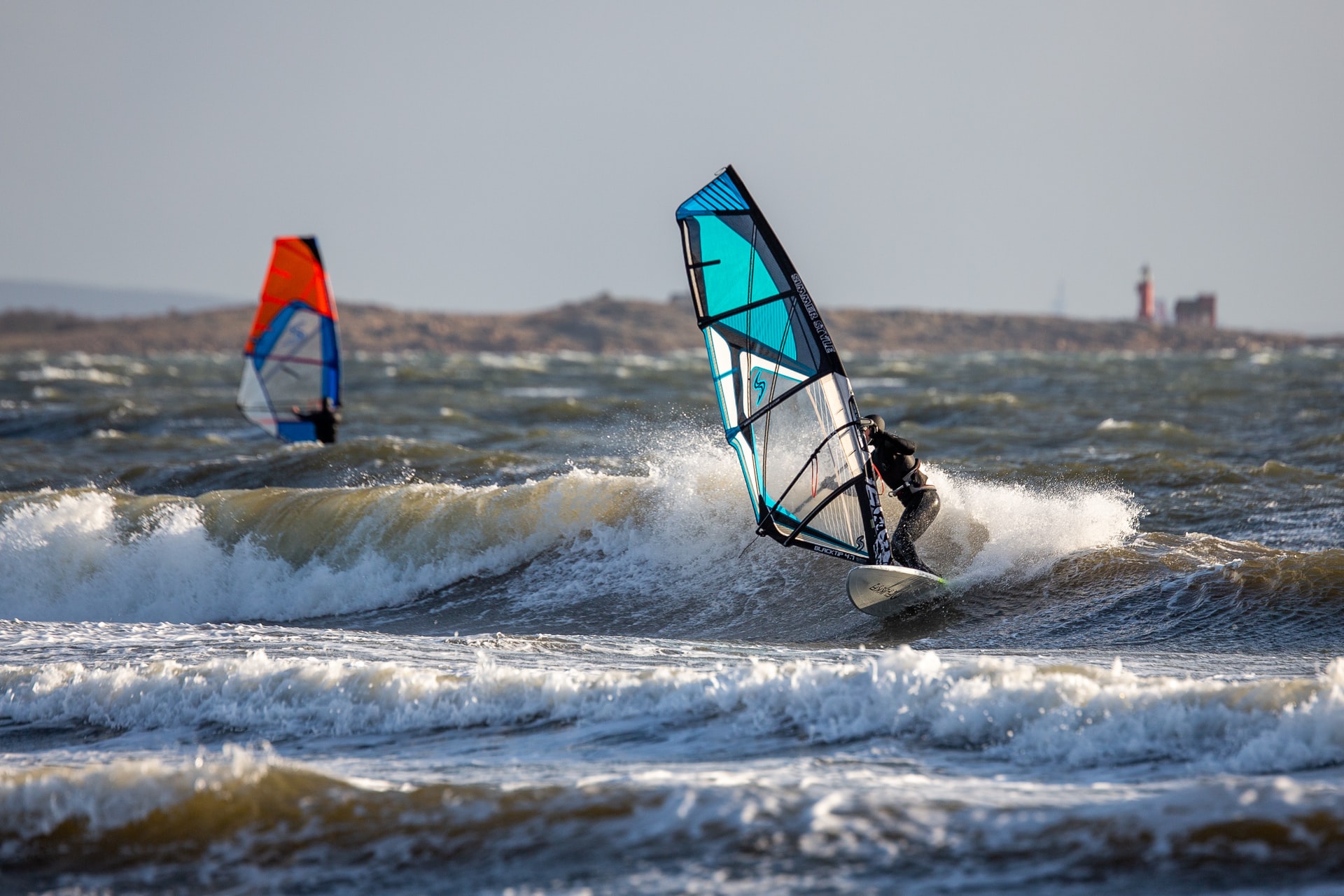
Surfing vs. Windsurfing: 8 Major Differences (& 4 Similarities)
-

How Does Windsurfing Affect the Environment? (+8 Practical Tips)
-
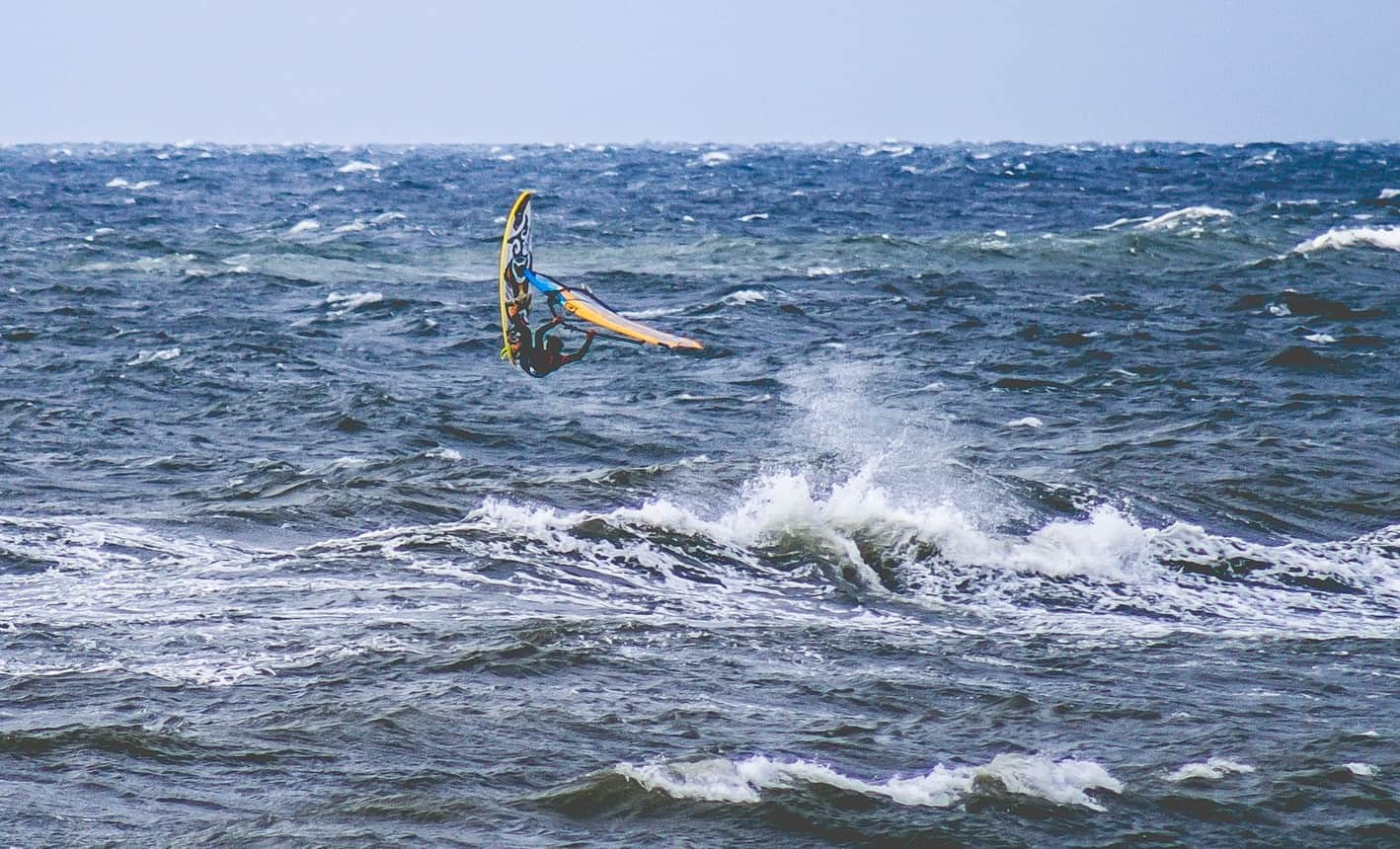
Is Windsurfing Dangerous? 14 Risks (& How to Avoid Them)
-
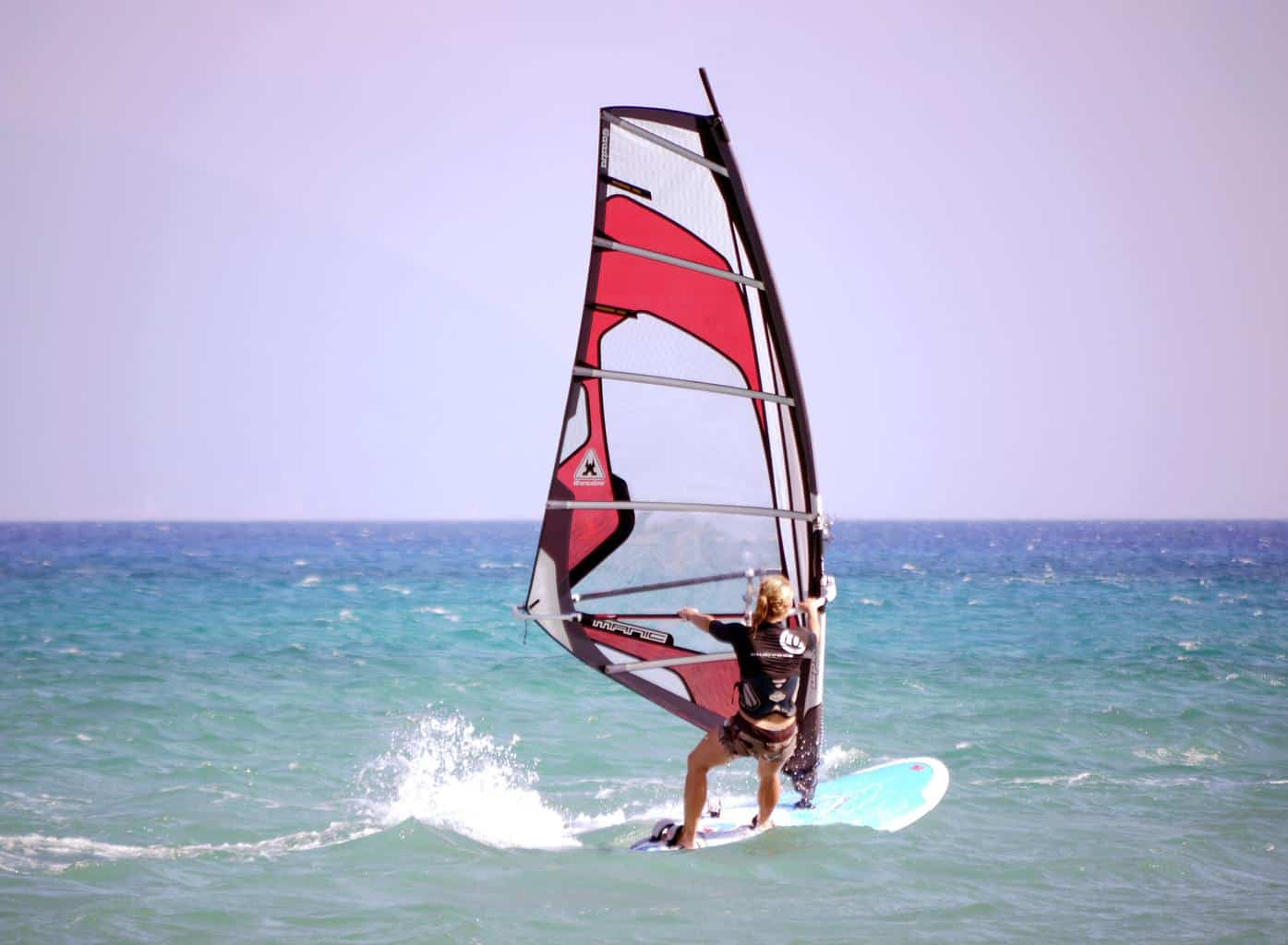
Windsurfing – 7 Common Beginner Questions (Answered)
-
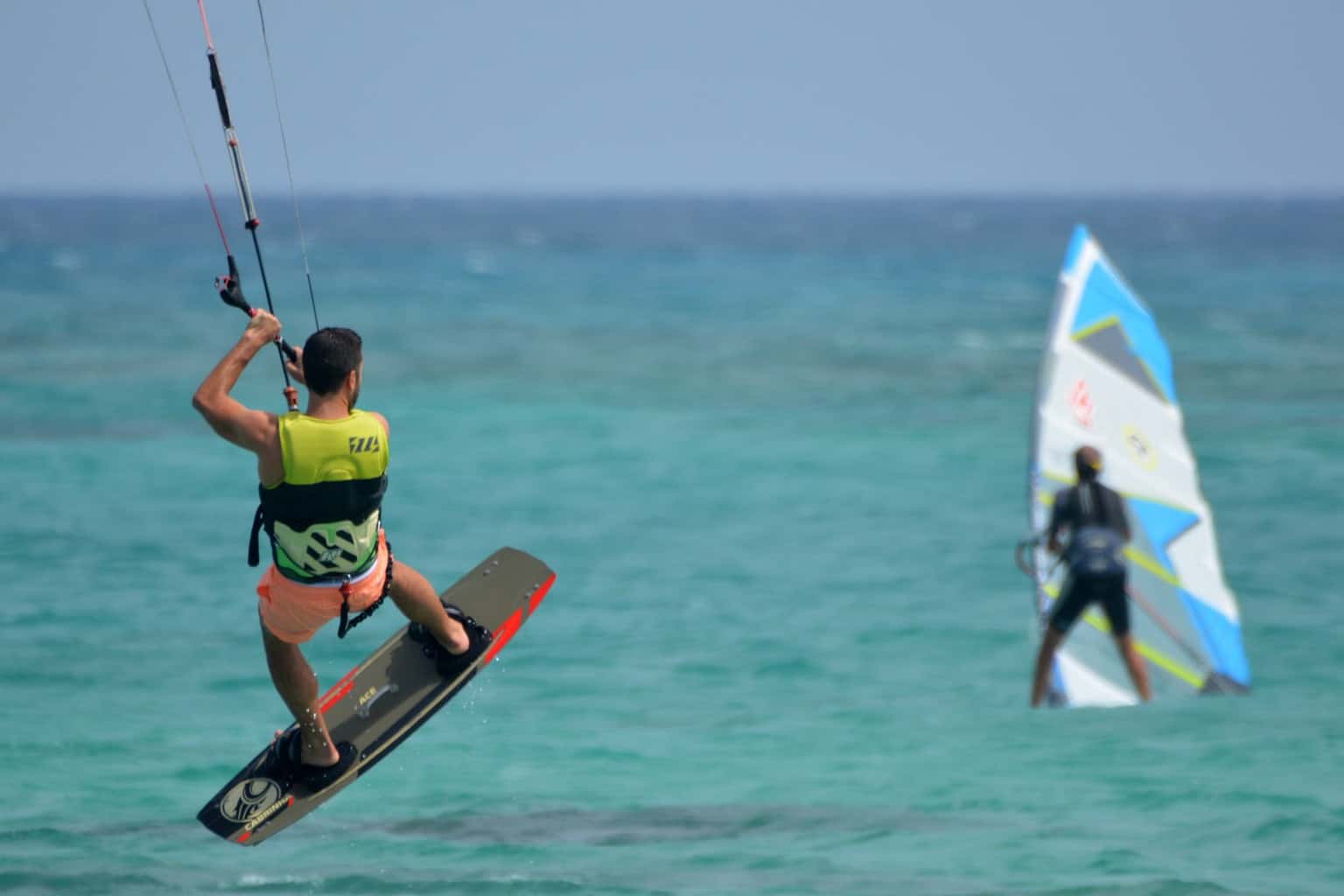
Is Windsurfing Faster Than Kitesurfing? (An Honest Look at the Facts)
-
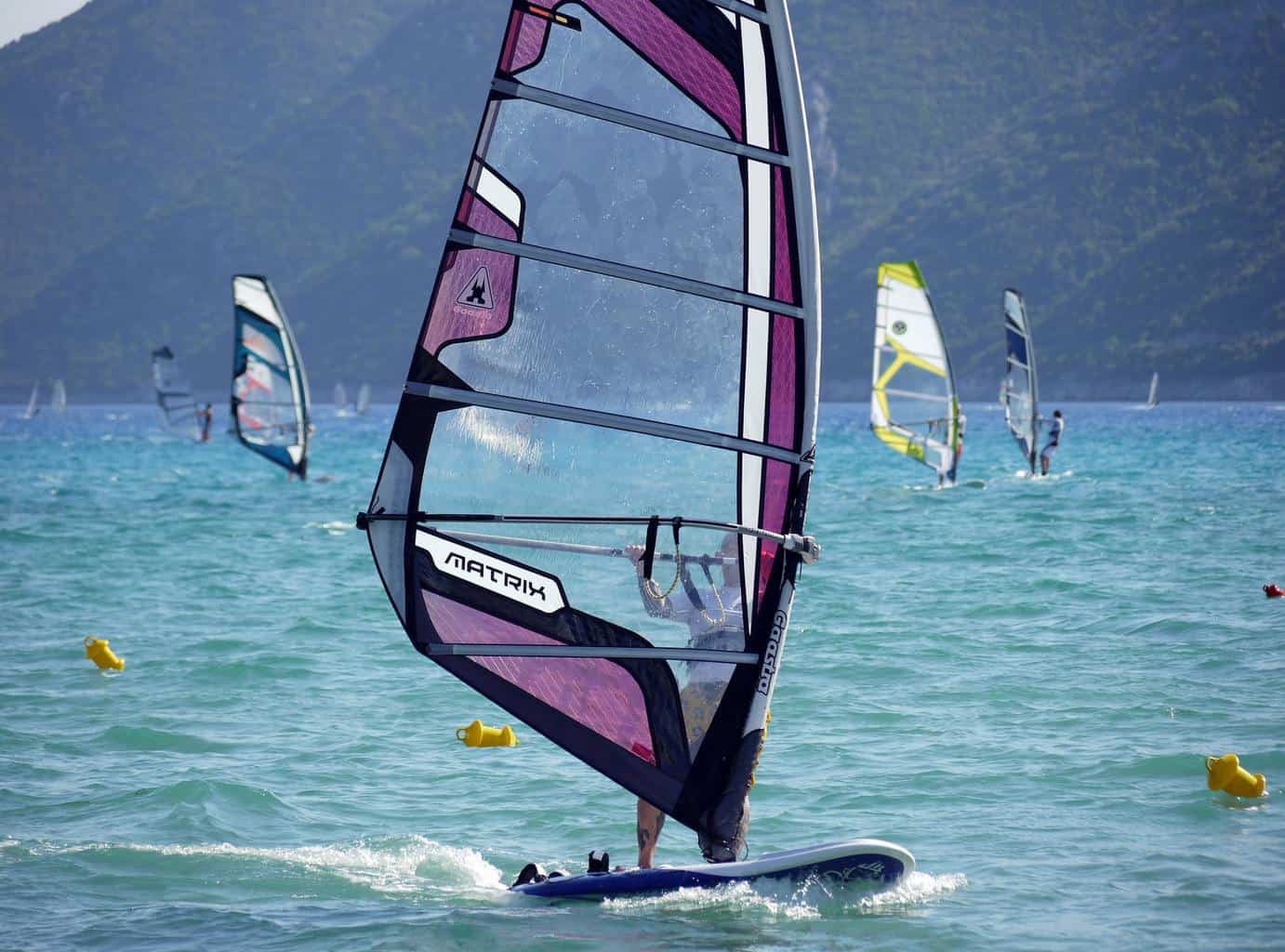
How to Choose the Right Windsurfing Sail Size (With Chart)
-

Windsurfing: How Much Downhaul Is Needed? (Essential Facts)
-

Is Windsurfing an Extreme Sport? (All You Need to Know)
-

Is Windsurfing Easier Than Kitesurfing? (An Honest Comparison)
-
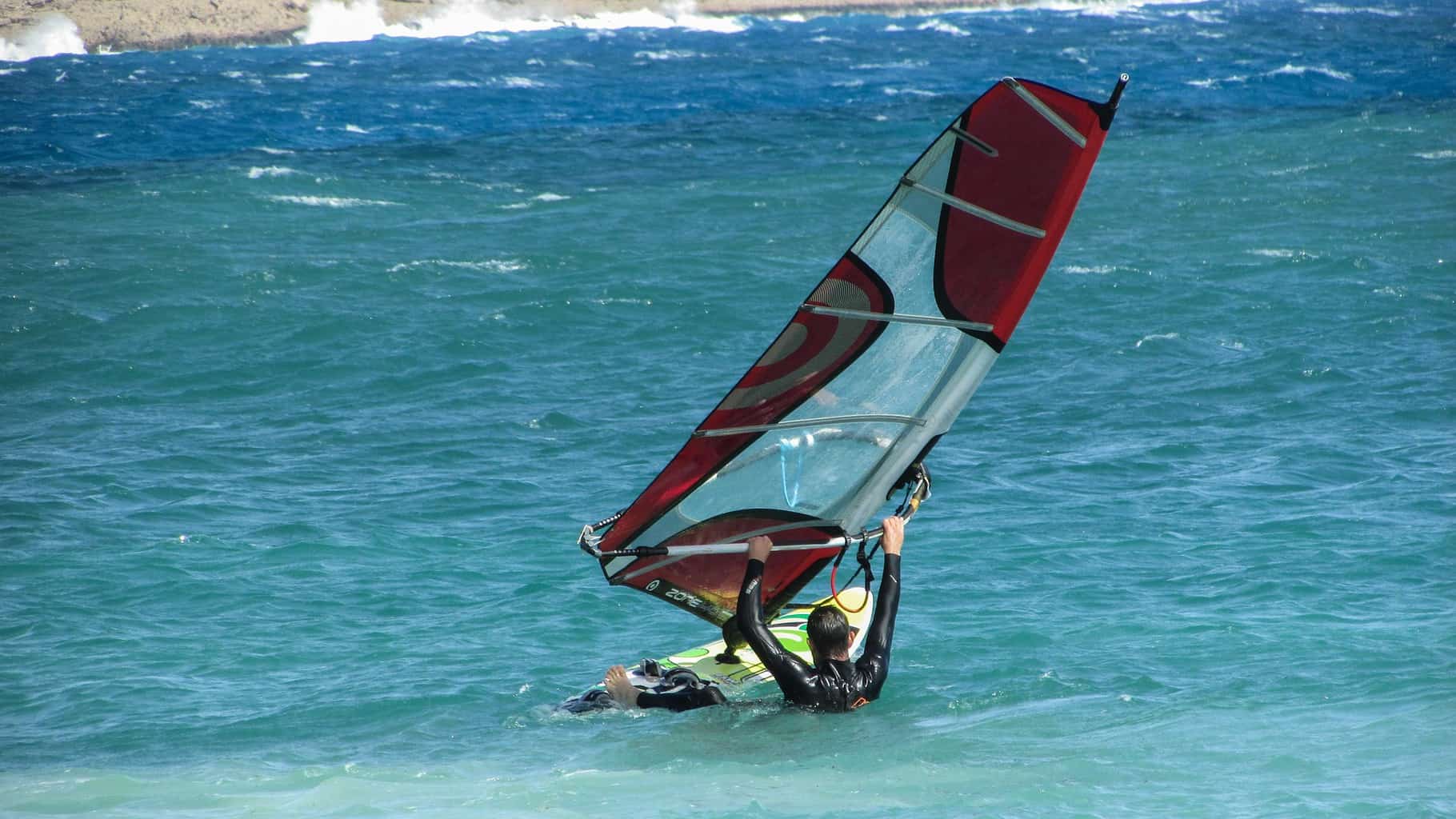
Is Windsurfing Harder Than Surfing? (Honest Comparison)
-
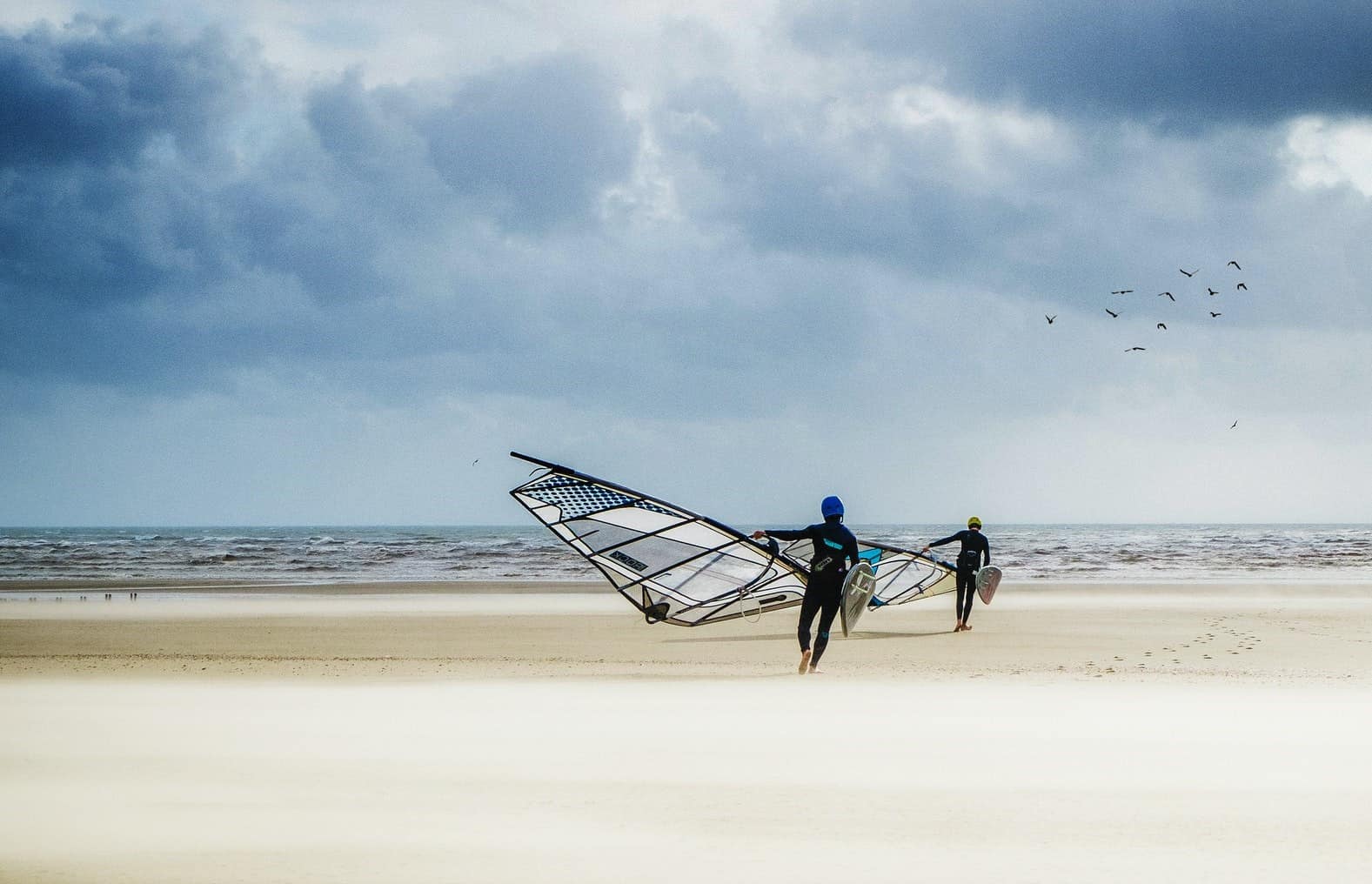
Is Windsurfing Still Popular? (An Insider’s Look at the Facts)











